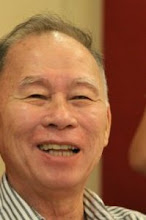Customized Philippine Health Care
This is in reaction to the government’s plan to “corporatize” public hospitals and the fierce reaction it got from critics, who vehemently refused to allow dilution of the health care peso that government can currently afford.
Understandably, our health reform can only be accomplished starting from barangay-level care and not by putting up stand-alone expensive monumental projects like the P700 million diagnostic center at the National Kidney and Transplant Institute that can raise suspicions of unholy collusion with favored suppliers.
First of all, let us look at what we already have.
We now have private capital pouring in to upgrade our tertiary level medical centers. They are trying to outdo one another in refurbishing infrastructure and medical hardware. This is being done despite huge outlays required due to the high-tech nature of imported modern diagnostics that have a high obsolescence rate of at most 5 years and thus high replacement needs. Statistically, considering the number and combined bed-capacity of these tertiary medical facilities, they cannot all possibly survive on the patronage of the limited local AB class market. Over 90% of Filipinos cannot afford their services.
I submit that we allow these privately funded super-specialty hospitals to fill the needs of their targeted market base. Government should not as a rule enter this realm but should merely arrange referrals from its facilities to these high-end medical centers for indicated cases. Government’s limited health budget should be centered on the all-important country-wide barangay level preventive primary care. Our young entrepreneurs, who have been developing their skills in Western companies, can build a software program that runs on the cheapest cellphones that will offer even illiterate farmers a voice or text advisory program that can be used to efficiently network ground level health units, where all the units, all the centers, are linked through a switched hub to a central server, and all the images are populated to review stations.
Likewise, it is best to closely look at the application of traditional and alternative health care to complement services in the grassroots clinics.
With more than 1,000 species of plants that are believed to have medicinal properties, the Philippines has the potential to become one of the world’s leading producers and exporters of herbal medicines and cosmetics.
Realizing the need for private-public partnership to meet the gargantuan challenge on health care, the burden should be shared between the government and foreign-assisted private investors. Foreign investors led by the many Filipino doctors should be encouraged to come home. They should be made to see not only the potential for profit, but also from a patriotic desire to upgrade the status of secondary government hospitals. There are many balikbayan medical practitioners from the USA and UK who have taken interest in the development of health care diagnostics or hospitals in their hometowns. These investments should bring with them high-tech care, advanced medical technology and trained Pinoy medical manpower. This is partly to halt and reverse the brain-drain of medical personnel.
Health care will thus emerge as a blue-chip industry and in recent years has attracted the investment of both domestic and foreign companies. Unlike the earlier image of the private sector, which mainly focused on nursing homes and polyclinics, the new market orientation is towards the full range of health care from wellness to super-specialty care.
It also makes sense to expand the coverage of Philippine Health Insurance to include diagnostic and outpatient care. To complement Philhealth, there are private companies aiming to devise health insurance schemes suited to the Philippine situation, to improve coverage by incorporating payments for general physicians (GP), medical tests and specialist charges, and containing costs through appropriate modern controlling systems. Besides health insurance, the high-tech, medical, electronic equipment industry has been the other area to attract investment by multinationals following corporatization.
The rationale for the above unsolicited advice:
- · If the health department concentrates most of its attention and funds on the prevention and basic outpatient care of the overwhelming grassroots folks all over the country, the need for the more expensive and complicated inpatient care will be greatly minimized.
- · With the upgrading of provincial and regional secondary hospitals assisted by private funds and trained manpower, patients still in need of further hospital care will be properly attended to.
- · Patients, who are indicated to need tertiary care, can be seen at the hub of government health care, a Philippine medical center, seen to be an upgraded PGH, which can further refer difficult cases to any of the private super-specialty medical centers.
-o0o-
It is obvious that what must go hand-in-hand with any “fresh” strategy is a firm change in the long-term leadership of the country and its institutions.
This is his real challenge. Can President Pnoy Aquino finally change the damaged culture at all levels and thus re-establish the trust and confidence of the citizenry on the establishment?
AMDG



